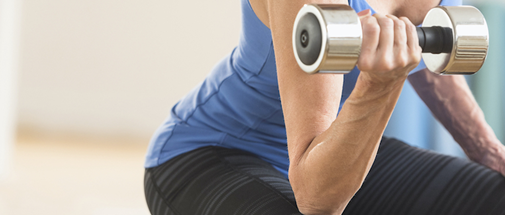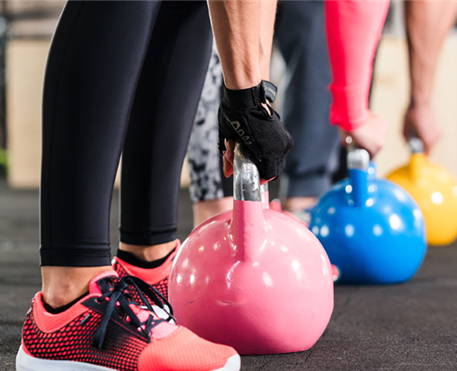
Exercise is well established as an effective treatment modality for many conditions, from cancer patients to diabetics & osteoporosis. The physical & mental benefits of exercise are so well proven that it is among the most widely prescribed treatment options, often as part of a wider management plan. Women can experience a range of physical & mental health challenges throughout their lifetime, & several of these more common challenges can be helped significantly with the use of exercise.
Exercise Tailored For Women
Exercise brings many benefits to both men & women, & in general the principles used in exercise prescription are common across genders. However, there are some areas where exercise tailored specifically for women delivers extra benefits, for example improving bone health & aiding weight loss. There are also considerations regarding exercising around the menstrual cycle.
Exercise For Osteoporosis
Osteoporosis is more prevalent amongst females, especially post-menopausal. Many women are unaware that exercise is a treatment option to help slow the decline in bone mineral density, & are unsure if exercise is actually safe to complete once diagnosed with osteoporosis.
Exercise guidelines for osteoporosis in women are clear: impact loading combined with balance & resistance training is best. Impact exercises can include step ups, small jumps or lands, & single leg hopping. When prescribed in a controlled & safe manner, these exercises are extremely effective in improving bone mineral density levels2.
.
Balance & resistance training are also fantastic training types to include in osteoporosis exercise prescription. They help reduce the likelihood of falls because they strengthen the muscles needed for everyday activities that are likely to induce falls, for example stair walking or getting in & out of chairs.
Research shows that under properly supervised conditions a combination of resistance training, balance exercises & controlled impact loading is a high benefit/low risk treatment. It is effective in maintaining or even improving bone mineral density levels3 while being highly unlikely to produce any adverse effects in post-menopausal women. This makes it one of the most effective treatments for this condition.
Exercise For Weight Loss In Women
There are many reasons why women may want to lose weight. Some are cosmetic, & there are also important medical reasons including;
· Metabolic – eg diabetes & cardiovascular risk
· Musculoskeletal – eg excess weight is an aggravating factor for hip & knee OA, & also for low back pain
· Mental health – including combating the common side-effect of weight gain due to anti-depressants
Contrary to popular belief, running hundreds of kilometres on a treadmill is not the answer to losing weight! Female clients often tell us they have been neglecting all other types of exercise to purely focus on aerobic exercise when trying to lose weight. We always encourage clients, especially our female ones, to include regular resistance training as well as aerobic training when it comes to losing weight.

Extensive research shows that resistance training optimises fat loss by increasing excess post-exercise oxygen consumption (EPOC). This means clients will continue to burn calories for as long as 48 hours post activity. This level is much higher than compared to steady state aerobic exercise1.
Many women worry that resistance training will make them “bulk up”. However it is important to reassure women that because they have far less testosterone than men they will not become “bulky” with regular resistance training. Rather, appropriate progression of resistance training will allow them to decrease body fat levels while increasing muscle tone, helping deliver effective long-lasting weight management.
We strongly encourage our female clients to complete structured resistance training sessions 2-4 times per week when trying to lose weight. This, when paired with a healthy balanced diet & being generally active, is the preferred method of exercise-prescribed weight loss.
Exercising Around The Menstrual Cycle
Evidence regarding exercise & the menstrual cycle is relatively limited. There are many conflicting views on which phase should have more rest than the other, & what level of exercise assists with symptoms4.
The underlying principle for exercising around a woman’s cycle is simple: listen to your body. Exercise when you feel comfortable & rest when you feel like you need to. During the first stage of the cycle oestrogen & progesterone levels are at their lowest This decreases energy levels, so lower intensity exercises such as swimming, walking & yoga may be appropriate5. Following the end of their period, exercises can increase in intensity as energy levels improve.
No two women have the same experience with the menstrual cycle, so the same approach to exercising through it cannot be taken with all female clients. An individual, symptom-based approach to exercising throughout the menstrual cycle is best when training female clients.
Women’s Exercise Services At Central Performance
Our team of Exercise Physiologists have extensive education & experience tailoring exercise programs specifically to meet the needs of women. From weight loss to osteoporosis management, mental health to strengthening for OA & back pain, we deliver programs that are safe, effective & non-threatening.
We provide flexible exercise options including 1:1 exercise physiology sessions as well as small-group fitness. Our HERo women-only group fitness classes are one of our most popular programs, open to women of all ages & fitness levels. Click the link or contact us for more details and session times.
| REFERENCES 1. Greer, et al,, 2015. EPOC comparison between isocaloric bouts of steady-state aerobic, intermittent aerobic, & resistance training. Res Qtly For Ex & Sp, 86(2) 2. Beck, B.R., et al 2017. Exercise & Sports Science Australia (ESSA) position statement on exercise prescription for the prevention & management of osteoporosis. J. of Sc. & Med In Sport, 20(5), pp.438-445. 3. Watson, S.et al 2018. High-intensity resistance & impact training improves bone mineral density & physical function in postmenopausal women with osteopenia & osteoporosis: the LIFTMOR randomized control trial. J Bone & Min Res. 33 4. Brown, J. 2010. Exercise for dysmenorhoea. Cochrane Data. of Sys. Review, (2). 5. Anderson, T.W., 1965. Swimming & exercise during menstruation Journal of Health, Phys. Education, Recreation, 36(8), pp.66-68. |

